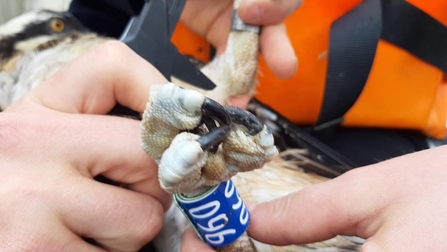If allowed, Ospreys are a species that has the ability to live alongside humankind peacefully and is also a species that ignites our imagination. There is nothing quite like the thrill of watching an Osprey diving, hitting the water feet first, with its talons outstretched, primed to catch a fish. It is a moment of awe and admiration for the sheer power and grace of the species. These days, Ospreys are slowly becoming more widespread across the country, with strong populations in Scotland, Wales, northern England (Cumbria and Kielder Forest for example) and of course here in Rutland.
Thankfully, these days Ospreys are relatively ‘safe’, in comparison to other raptors in the UK, for example Hen Harriers, which are still facing heavy persecution to this very day. Of course, there are a few exceptions to this, but as a whole, they face little threat from human influences. There are some predators, like corvids, which may prey on unhatched Osprey eggs if given the chance, or there was that video that went round a while ago of a Common Buzzard snatching a young Osprey chick from the nest, but as the third largest bird of prey in the UK, Ospreys don’t have many natural threats aka predators when they are here. And even if they did have more natural threats – natural threats being those uninfluenced by human activities – at least it would be natural.
Like with any migratory species, an Osprey faces more natural threats whilst they are travelling on their migrations, which could be related to things such as weather or even predation. But there is also an increased risk of falling foul to human imposed dangers. Ospreys are seen as competition to fish stocks and persecuted in some areas; in some areas; they are at risk to getting tangled in discarded fishing nets and the ingestion of plastic - similar to many other species which rely on water bodies; and also, the chance of colliding with human built structures, such as power lines or wind turbines.





